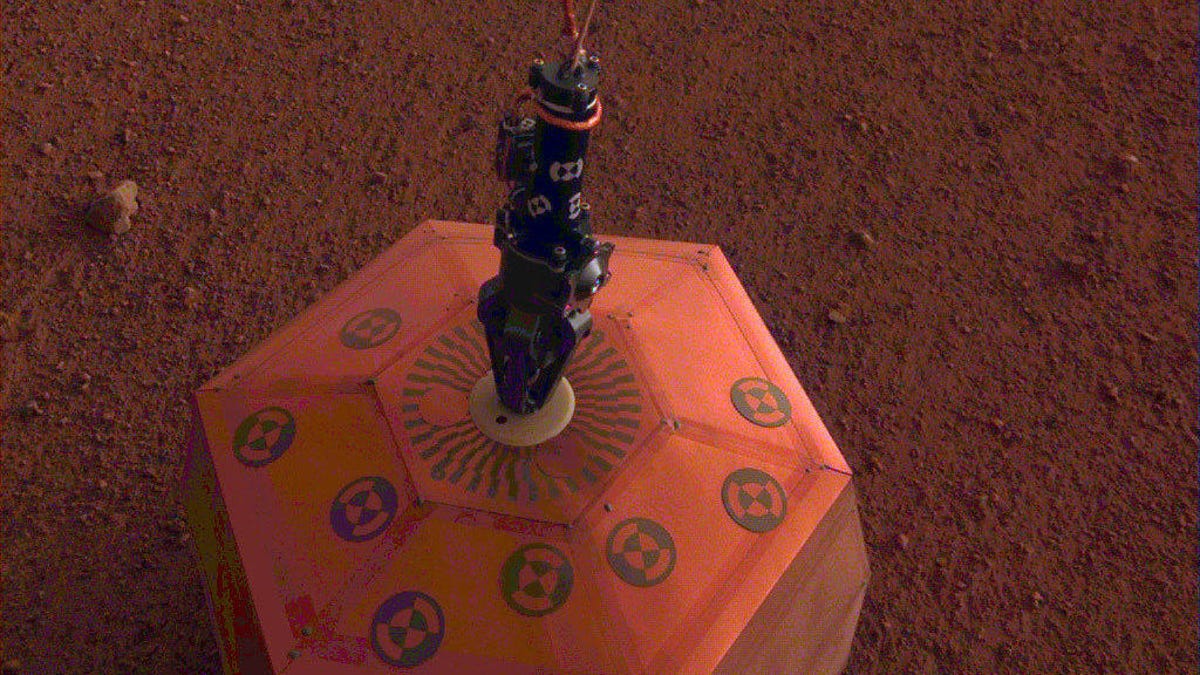Marsquake! NASA InSight lander detects a shimmy on Mars
Shake it up. Mars' stomach is rumbling and InSight is there for it.
There's a new field for scientists to study: Mars seismology.
NASA's InSight lander gently placed a seismometer on the surface of Mars late in 2018. On April 6, the effort paid off with what could be the first detection of a marsquake.
A marsquake is like an earthquake, except it happens on the red planet. French space agency CNES (The National Centre for Space Studies) built the seismometer and released its first findings Tuesday.
This cover is designed to keep InSight's seismometer safe.
"It's so exciting to finally have proof that Mars is still seismically active," said Philippe Lognonné, the principal investigator for SEIS (Seismic Experiment for Interior Structure).
NASA was a little more circumspect with its own release, calling the event the first "likely" marsquake.
The marsquake was no more than a faint rumble, but CNES says it's the first event that appears to be coming from the interior of Mars and not from wind shaking the instrument.
The quake matches up with data from similar quakes detected by NASA's Apollo missions on the moon.
"While Mars doesn't have tectonic plates, which cause most of Earth's quakes, both planets and the moon experience the kind of quake caused by faults, or fractures in their crusts. As heavy masses and slow cooling add stress to the crust, it cracks, releasing energy," CNES said.
NASA released a video of the ground vibrations labeled with the Mars wind, the likely marsquake and noise from the lander's robotic arm. The audio was processed to make it audible to the human ear.
InSight picked up three other, weaker signals, which may also be seismic, but scientists are still vetting the data.
NASA launched InSight nearly a year ago, and the lander settled into its new home at Elysium Planitia on Mars in November 2018. InSight is on a mission to study the interior of Mars to help us learn more about how rocky planets are formed.
While news of a marsquake is thrilling, the seismometer has a lot more listening to do. "The seismic event is too small to provide useful data on the Martian interior, one of InSight's main objectives," CNES said. Let's hope this little rumble is just a precursor to more significant tremors on Mars.


